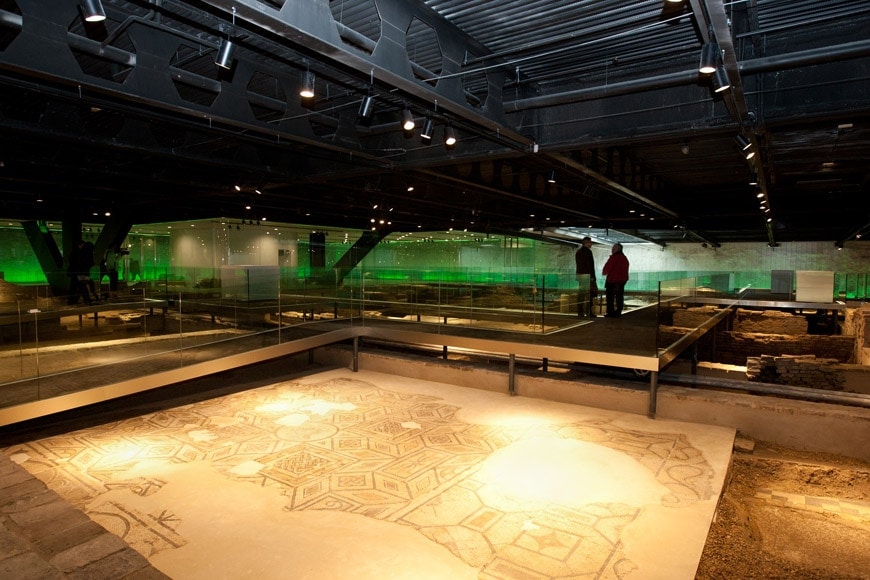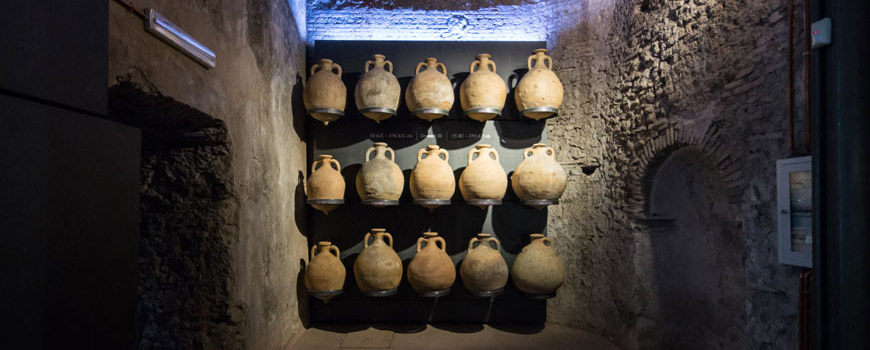Metropol Parasol Antiquarium Seville – Felipe Palomino Arquitectos
Felipe Palomino Arquitectos -Sevilla
www.felipepalomino.com
Archaeological consultancy and planning:
Fernando Amores Carredano
Engineering: Germán Palomino González
The Metropol Parasol, designed by German architect Jürgen Mayer-Hermann together with Arup, with the Antiquarium entrance; photo John Mason CC BY 2.0.
The Antiquarium Archaeological Museum at the Metropol Parasol, Seville
The Antiquarium archaeological museum in Seville is part of the larger Metropol Parasol project, which was aimed at the urban renovation of the Plaza de la Encarnacion square in Andalusia’s capital.
The area of intervention is located at the crossing between the cardo and the decumanus of the ancient Roman city and for centuries has been the site of an important market since the 1970s when the commercial premises were demolished and the area lost its function.
After a few decades, the Seville City Council envisaged an urban redevelopment project for the whole area.
The German architect Jürgen Mayer-Hermann was appointed to design the intervention with its new five-story building which, at its underground level, houses the Antiquarium museum, designed by Felipe Palomino Arquitectos.
The museum was created to allow people to visit the outstanding archaeological remains that were found during the early excavations for the realization of the Metropol Parasol.
The Antiquarium
For Felipe Palomino: “The most important aspect of architecture lies in the sensations that the spaces it creates produce on people. Space forms and transforms us”.
The archaeological remains found during the realization of the Metropol Parasol in Plaza de la Encarnación, located at 5,45 meters below the ground level, have been enclosed in a giant open space with a floor area of almost 5,000 square meters. The idea behind the project is to modify the sensation visitors usually feel inside a basement located several meters underground.
The inspiration came from the sea: the project was conceived to make people feel like they were underwater exploring a submerged environment where things can be seen only when you approach them closely and, at the same time, a space with no visible boundaries.
Felipe Palomino designed a sort of “membrane” that wraps the remains, creating a diverse set of spaces. This membrane is mostly made of glass panels with different levels of transparency, thus permitting ideal control over the visibility and the perception of the various areas of the museum and the archaeological findings, at the same time avoiding the creation of rigid and secluding enclosures. Such an arrangement also produces a dynamic space that follows the architect’s principle of architecture primarily based on the creation of a varied set of sensations on persons.
Since the majority of the space couldn’t be illuminated with natural light, the architect added two artificial lighting systems; one for the new architectural parts, aimed to create a controlled range of atmospheres, and the other designed to properly illuminate the archaeological remains without compromising their preservation.
Drawings and photos courtesy of Felipe Palomino Arquitectos.
copyright Inexhibit 2024 - ISSN: 2283-5474













